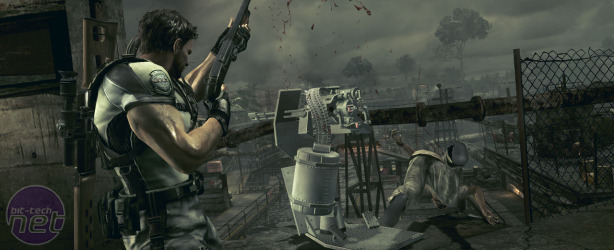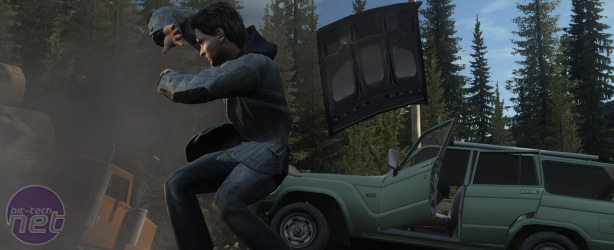The Future of Fright
Konami’s Silent Hill for instance, took survival horror down a deeply disturbing route inspired by psychological horror. Unlike its Capcom rival, Silent Hill was set in a small US town masked in fog, and used real-time 3D to build the game world. One of the standout features of the game was the use of static noise from a portable radio as a makeshift monster radar that indicated when a demon was close by. You’d get a warning that something was coming – but never what it was or from where it would approach.The use of fog created a tense atmosphere and a sense of isolation for players too, but that wasn’t the end of Silent Hill’s secrets: it was the character’s journey between foggy Silent Hill to ‘evil’ Silent Hill, which took the genre to a new place. Whereas the foggy town was haunting and eerie, the rusting and sadistic evil version of the town that players sometimes stumbled into was far worse. Locations mirrored between the two versions of Silent Hill, almost acting as a metaphor for the evil underneath the skin of the town.
Unfortunately, while sequels to Silent Hill and Resident Evil built upon its predecessors, the genre almost seemed to wallow rather than leap forward. The proliferation of zombies in Resident Evil 3 spread to the nearby Raccoon City, and introduced the terrifying Nemesis (the fundamental rule of the game being, if you heard “STARS” growling out of the speakers, run. Just. Run), but it never really pushed barriers other than ‘bigger is better’. The setting was now an entire city; the puzzles were spread over several stages and there were more zombies to kill – but it was the same basic structure.
Silent Hill meanwhile introduced more hapless victims into the supernatural horror of the town, reflecting back the most troubled truths of their psyche in Silent Hill 2, which the iconic Pyramid Head. Like Nemesis, Pyramid Head has gone down as something which defines the series, though the downside of that is that recent titles too often rely on that fact.
Although survival horror was seemingly in the grip of ‘sequelitis’, there was the occasional smattering of originality to be had. Eternal Darkness’ “sanity meter” disorientated players with whispering voices, disjointed camera angles, and most disturbing of all, simulated game-breaking errors on screen whenever paranormal forces spotted the protagonist. This was survival horror breaking the ‘fourth wall’, and it proved there were still developers coming up with new ways to scare us witless.
Elsewhere, the Project Zero franchise introduced players to the notion of using photography to kill ghosts; using a camera obscurer and different qualities of film stock, players had to wait until the ghosts got close to them before taking the shot. Very often monochromatic, Project Zero cleverly used incidental colour (red for instance in the series’ second instalment) to create a haunting environment for players. The Alone in the Dark franchise meanwhile tried to emerge from the darkness on PlayStation 2 in A New Nightmare, which saw Carnby’s flashlight play a pivotal role in exploring the mansion and defeating enemies – a feature which Alan Wake also made use of.
Perhaps inevitably it was the 2004 release of Resident Evil 4 that ultimately took survival horror (and the franchise) into a new direction, shifting it away from static cameras and even zombies, to deliver one of the best games to ever arrive on Nintendo’s GameCube. Not only was the location overhauled (this time set in Europe), but Resident Evil 4 reinvented the series as a whole by changing the perspective to an over-the-shoulder view. The pace of the action was increased, and most notably, did not feature any zombies. It proved so popular that Resident Evil 5 continued the changes, though to lesser fanfare.
In recent years, survival horror has become increasingly diverse, from the attempted revival of Alone in the Dark and its use of fire, to the sci-fi stylings of Dead Space. Like the platforming genre years before, the gameplay of one survival horror game can be vastly different to another, blurring the line between other genres in the process.
In many ways Alan Wake marks a return to traditional survival horror gameplay, with a near-constant feeling of being chased, environmental puzzles (albeit fairly straightforward ones), and the contrasting levels of horror depending on the time of day – not unlike Silent Hill’s disparate foggy and evil versions. More than that, Remedy includes gameplay that’s very much in line with the studio’s heritage, with dream sequences and flashbacks expanding on the story in a way that plunges players deeper into the fiction – and perhaps marking another stage in the evolution of the genre.

MSI MPG Velox 100R Chassis Review
October 14 2021 | 15:04












Want to comment? Please log in.